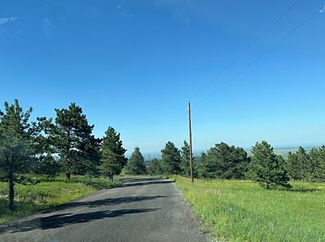
Step 1
Step 2
Review Your Resident Action Plan
Step 5

Plainview
Resident Action Plan
Here's an overview of the neighborhood as it relates to Fire Potential and Mitigation Efforts.
The Plainview Plan Unit has an MODERATE Relative Risk Rating.
Under extreme fire weather and during a fire:
-
15% of the area could experience very high to extreme fire behavior.
-
0% of homes are exposed to radiant heat from burning vegetation.
-
83% of homes are exposed to embers from burning vegetation.
-
4% of the roads (0.2 miles) have potentially non-survivable conditions.
County:
This plan unit is in Jefferson County.
Vegetation, topography, and potential fire behavior:
In the Plainview plan unit, foothills transition into plains, and homes are nestled against the gentle slopes, with some in forested locations. Due to the lack of continuous forest cover in this plan unit, there is little risk of active crown fire. However, fire can move quickly through tall grasses and, if left unmitigated, can cause homes to ignite.
Hazards in the home ignition zone:
Homes in this plan unit are a mix of construction materials. About 50% of homes have class A roofs made of non-combustible materials such as metal, while the other 50% are made of combustible materials such as wood shingles and old asphalt with many cracks, making them susceptible to embers landing on the roof and igniting the home. Similarly, many homes have untreated wood siding and decking that is not fire-resistant. Homes in this plan unit do not have adequate mitigation in home ignition zones 1 & 2. Many homes have hazards including wood piles, old wooden sheds, and propane tanks within 30 ft of the home. The main threat to the homes in this plan unit is embers landing within 30 feet of the home and igniting it.
Roadway accessibility and evacuation capacity:
Roads in the Plainview plan unit are accessible for firefighters and can accommodate two-way traffic. However, there is only one primary egress route for community members in this plan unit, which limits the ability of residents to evacuate quickly during an emergency. There is a railroad crossing in this plan unit, which has the potential to delay evacuation times and trap residents in case of an emergency. There is a new development in this plan unit underway that will significantly increase the population here. It is recommended that this neighborhood have at least two quality egress routes.
Fire suppression considerations:
The Plainview plan unit does not have hydrants, and there are only a few cisterns. Most homes have visible and reflective address signs. There are overhead powerlines throughout the plan unit. Downed powerlines can be an ignition source and hazard to firefighters and residents.
Your Ambassador is ??
Ambassadors are volunteer liaisons to members in their own Plan Unit to help them learn about programs available to them. Ambassadors provide information, community resources and help organize community mitigation projects to reduce wildfire risk around homes and in neighborhoods.
Contact Plainview
at ??

Click To Enlarge Map

Click To Enlarge Map

Recommendations for Residents in
Plainview
1. Prepare your home for wildfire. Residents should start with hardening their homes, then complete mitigation actions in home ignition zones 1 and 2. It is recommended that every homeowner in this plan unit gets a home assessment from their county or CCCFPD’s partners to identify specific mitigation actions that need to be taken, as actions will vary among homes.
2. Move hazards such as wood piles, propane tanks, and old dilapidated wooden sheds at least 30 ft away from the home. Replace wooden fences with non-combustible fencing material.
3. Form a fire mitigation group in your plan unit. Organize community-wide home hardening and defensible space tours to demonstrate effective mitigation practices. Find out how to organize a neighborhood event with your local Saws and Slaws group and volunteer at those events.
4. Develop an evacuation plan for your family, sign up for emergency notifications from Jefferson County (and consider signing up for Boulder County emergency notifications too), and coordinate with neighbors who might need additional support during evacuations.
5. Remove vegetation along the roads, particularly along Highway 72. Support local community organizations and the USFS in working on the Central Corridor Rail Line Ignition Reduction project. Support CDOT and partners for the Highway 72 Roadside Fuel Reduction project.
6. Install community cisterns in coordination with CCCFPD.
7. Work with neighbors to create linked defensible space. Projects that span multiple properties are more effective at reducing wildfire risk. Contractor costs can sometimes be shared among homeowners, reducing the cost for everyone involved. On average, residents in Plainview should expect to work with 1-2 neighbors to ensure their HIZ is mitigated.
8. Work with CCCFPD and Jefferson County to identify a feasible secondary egress route out of the community.
9. Advocate for county support from Jefferson County to implement a program like Wildfire Partners and host a slash sort yard or more collection events located in the fire district.
